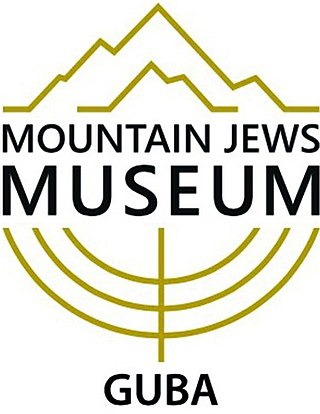
Shusha or Shushi is a city in Azerbaijan, in the region of Nagorno-Karabakh. Situated at an altitude of 1,400–1,800 metres (4,600–5,900 ft) in the Karabakh mountains, the city was a mountain resort in the Soviet era.
Qazax is a city in and the capital of the Gazakh District of Azerbaijan. It has a population of 20,900. Gazakh is a city and administrative district in the west of Azerbaijan, the "western gate" of Azerbaijan.

The Karabakh carpet, or Artsakh carpet, is one of the varieties of carpets of Transcaucasia, made in the Karabakh region.

The Nagorno-Karabakh conflict was an ethnic and territorial conflict between Armenia and Azerbaijan over the region of Nagorno-Karabakh, inhabited mostly by ethnic Armenians until 2023, and seven surrounding districts, inhabited mostly by Azerbaijanis until their expulsion during the 1990s. The Nagorno-Karabakh region was entirely claimed by and partially controlled by the breakaway Republic of Artsakh, but was recognized internationally as part of Azerbaijan. Azerbaijan gradually re-established control over Nagorno-Karabakh region and the seven surrounding districts.

The Artsakh State Historical Museum of Local Lore is a museum in Stepanakert, Azerbaijan. The museum was founded in 1939. The museum aims to preserve the archeological and cultural history of the Artsakh people. It boasts 50,000 historical-cultural artifacts, presenting the origins and development of the territory and its inhabitants. Recent archaeological excavation conducted in the region has provided further opportunity for the museum to enrich its collection.

Holy Savior Cathedral, commonly referred to as Ghazanchetsots, is an Armenian Apostolic cathedral in Shusha in Azerbaijan. It is the cathedra of the Diocese of Artsakh of the Armenian Apostolic Church. Standing 35 metres (115 ft) high, Ghazanchetsots is one of the largest Armenian churches in the world. A landmark of Shusha and the Karabakh region, and of Armenian cultural and religious identity, it is listed as cultural and historical monument of the breakaway Republic of Artsakh.

The Armenian passport is a passport issued to Armenian citizens to enable them to travel outside Armenia, and entitles the bearer to the protection of Armenia's consular officials overseas. Armenian citizens have visa-free or visa on arrival access to 65 countries and territories as of 2023.
Gülablı, also known as Abdal-Gülablı, is a village in the Aghdam District of Azerbaijan.

Talish is a village in the Aghdara District in Azerbaijan, in the disputed region of Nagorno-Karabakh. The village had an ethnic Armenian-majority population prior to the 2020 Nagorno-Karabakh war, and also had an Armenian majority in 1989.

Azerbaijan National Carpet Museum is a museum located in Baku that displays Azerbaijani carpets and rugs with historical and modern weaving techniques and materials. It has the largest collection of Azerbaijani carpets in the world. First opened on Neftchiler Avenue in 1967, it moved to a new building on the Baku's seafront park in 2014.

House Museum of Bulbul or Memorial Museum of Bulbul is a historic house museum of famous Azerbaijani Soviet singer Bulbul. The memorial museum was created in 1976 on the personal initiative of Heydar Aliyev and the museum had a ceremonial opening in 1982. The museum is located in Bulbul 15, Sabail, Baku.

House-Museum of Uzeyir Hajibeyov is the museum located in Shusha of Uzeyir Hajibeyov, an Azerbaijani composer, musicologist, publicist, playwright, teacher and public figure, founder of the professional musical art of the modern Azerbaijan and of the national opera.

Aghdam Bread Museum is a designated museum of bread and bakery products, agricultural implements and their history being located in the city of Aghdam. The museum received its first visitors on 25 November 1983. It had about 2800 exhibits and was protected by state as a cultural monument. The "Sunbul" Cafe operated on the adjacent territory of the museum.
Azerbaijan State Museum of History of Karabakh was a museum located in Shusha, Azerbaijan.
The house-museum of Mirza Alakbar Sabir is a memorial museum dedicated to the Azerbaijani satirical poet, public figure, philosopher and teacher, Mirza Alakbar Sabir. The museum is located in Shamakhi.
The house-museum of Jafar Jabbarly is a memorial museum dedicated to the Azerbaijani playwright, poet, director and screenwriter, Jafar Jabbarly (1899–1934).

The 2020 shelling of Ghazanchetsots Cathedral took place prior to the Battle of Shusha on 8 October, when the Holy Savior Cathedral of the city of Shusha, known as Ghazanchetsots Cathedral, was struck twice by missiles, resulting in the collapse of a part of the roof. Armenia accused the Azerbaijani Armed Forces over the shelling.

The Museum of Mountain Jews is a museum in Guba, Azerbaijan, dedicated to Mountain Jews. Opened in 2020, it is located in the 19th-century Karzhog Synagogue. It is the first and only museum in the world devoted to Mountain Jews.
Absheron Museum of History and Local Studies(Azerbaijani: Abşeron Tarix-Diyarşünaslıq Muzeyi) It started its activities on November 21, 1983.

The State Flag Square and Museum of Nakhchivan is a museum and square in the city of Nakhchivan of the Nakhchivan Autonomous Republic of Azerbaijan.













